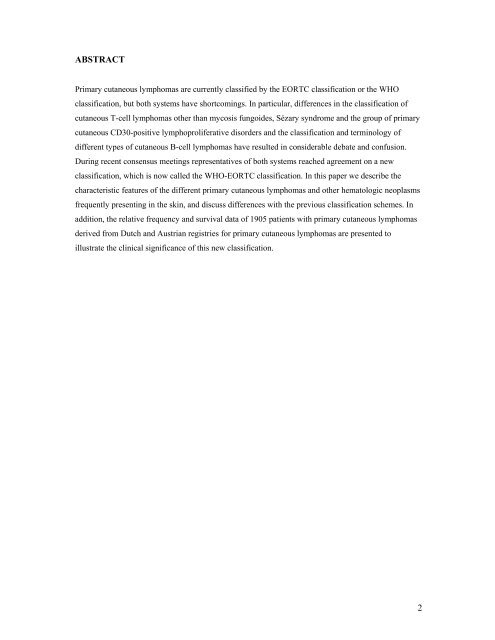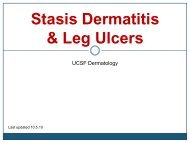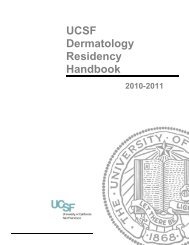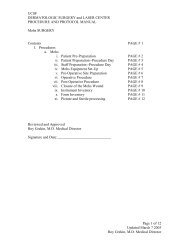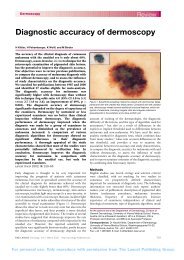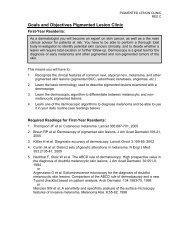who-eortc classification for cutaneous lymphomas - Dermatology
who-eortc classification for cutaneous lymphomas - Dermatology
who-eortc classification for cutaneous lymphomas - Dermatology
You also want an ePaper? Increase the reach of your titles
YUMPU automatically turns print PDFs into web optimized ePapers that Google loves.
ABSTRACT<br />
Primary <strong>cutaneous</strong> <strong>lymphomas</strong> are currently classified by the EORTC <strong>classification</strong> or the WHO<br />
<strong>classification</strong>, but both systems have shortcomings. In particular, differences in the <strong>classification</strong> of<br />
<strong>cutaneous</strong> T-cell <strong>lymphomas</strong> other than mycosis fungoides, Sézary syndrome and the group of primary<br />
<strong>cutaneous</strong> CD30-positive lymphoproliferative disorders and the <strong>classification</strong> and terminology of<br />
different types of <strong>cutaneous</strong> B-cell <strong>lymphomas</strong> have resulted in considerable debate and confusion.<br />
During recent consensus meetings representatives of both systems reached agreement on a new<br />
<strong>classification</strong>, which is now called the WHO-EORTC <strong>classification</strong>. In this paper we describe the<br />
characteristic features of the different primary <strong>cutaneous</strong> <strong>lymphomas</strong> and other hematologic neoplasms<br />
frequently presenting in the skin, and discuss differences with the previous <strong>classification</strong> schemes. In<br />
addition, the relative frequency and survival data of 1905 patients with primary <strong>cutaneous</strong> <strong>lymphomas</strong><br />
derived from Dutch and Austrian registries <strong>for</strong> primary <strong>cutaneous</strong> <strong>lymphomas</strong> are presented to<br />
illustrate the clinical significance of this new <strong>classification</strong>.<br />
2


